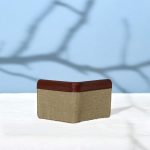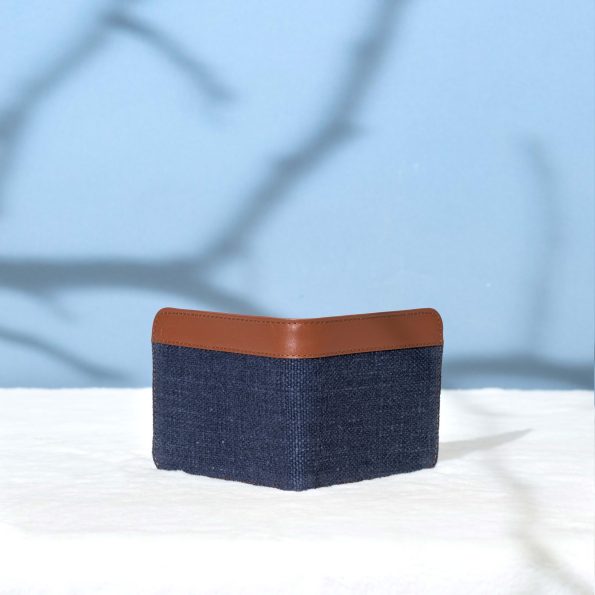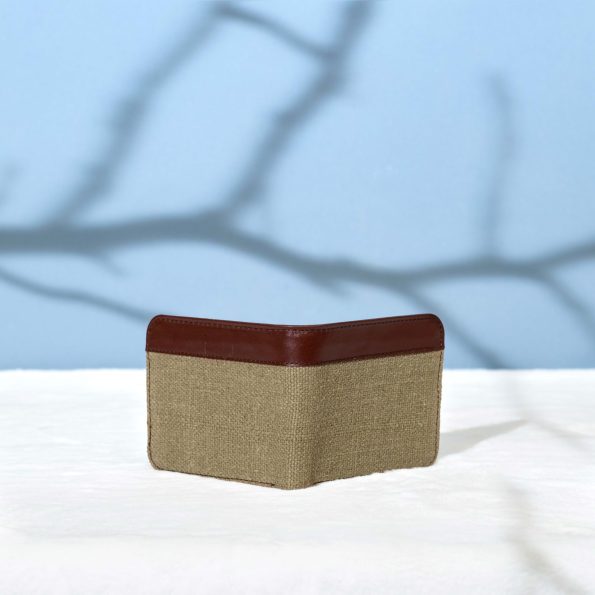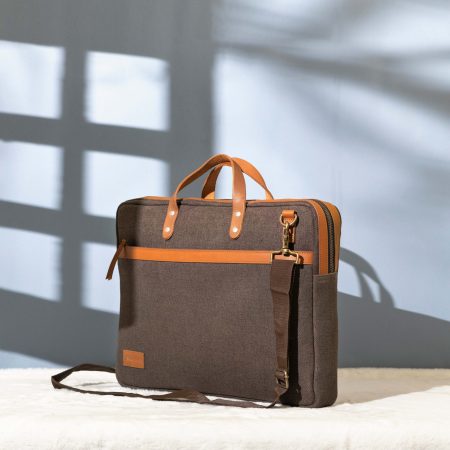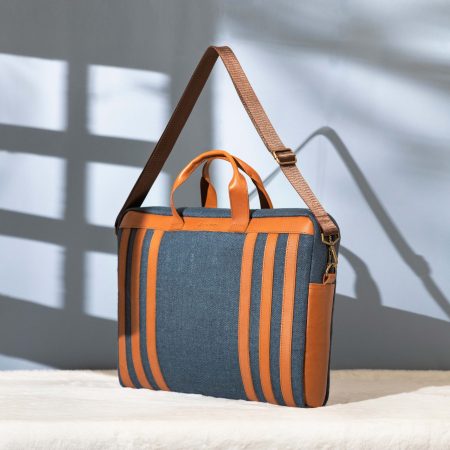Bhadra
৳ 500.00
কালিন্দীর জনপ্রিয় প্রডাক্টগুলোর মধ্যে পাটের ওয়ালেট গুলো অন্যতম। জুট এবং লেদার কম্বিনেশনে ভীষণ স্টাইলিশ এই ওয়ালেট দুটি ভিন্ন ভিন্ন রঙে পাওয়া যাচ্ছে।
সাইজঃ ৪” × ৪.৫”।
- Delivery & Return
Delivery
আমরা পুরো বাংলাদেশে হোম ডেলিভারি দিয়ে থাকি। ডেলিভারির সময় ২-৫ দিন। পণ্যের আকার, ওজন এবং আপনার লোকেশনের উপর নির্ভর করে ৮০-১৫০ টাকা ডেলিভারি চার্জ প্রযোজ্য।Return
আমরা প্রতিটি পণ্য খুবই যত্নের সাথে কোয়ালিটি কন্ট্রোল করি। পণ্যটি নেওয়ার সময় অবশ্যই ভালোভাবে চেক করে নেওয়ার অনুরোধ রইল। এর পরও যদি কোন সমস্যা হয় তাহলে ডেলিভারির ৭ দিনের মধ্যে রিফান্ডের (শর্ত সাপেক্ষে) ব্যবস্থা আছে।Help
যেকোন প্রয়োজনে আমাদের সাথে যোগাযোগ করুন। Facebook: https://www.facebook.com/kalindi.com.bd Phone: +880 1810151890 Email: [email protected]
ভদ্রা
যশোরের ঝিকরগাছার কাছে কপোতাক্ষ নদ থেকে উৎপন্ন হয়ে খুলনা জেলার পসুর ও শিবসা নদীর মধ্যবর্তী ভূ-ভাগকে বিভক্ত করে সুন্দরবনের মধ্য দিয়ে প্রবাহিত হয়ে পশুর ও শিবসা নদীদ্বয়ের মিলনস্থলে গিয়ে পতিত হয়েছে। স্থানীয়ভাবে এই অংশ মরা ভদ্রা নামে পরিচিত। কিন্তু পরবর্তীকালে ভদ্রা সুতারখালীর নিকট থেকে দক্ষিণ-পূর্বাভিমুখে প্রবাহিত হয়ে সুন্দরবনের অভ্যন্তরে প্রায় ৩০ কিমি পথ অতিক্রম করে পসুর পশুর নদীতে পড়েছে। বর্তমানে নদীর এই গতিপথ পরিবর্তিত হয়ে সুতারখালী নদী দিয়ে এর মূল স্রোত প্রবাহিত হচ্ছে। নদীতে নিয়মিত জোয়ার-ভাটা হয়। স্বাভাবিক জোয়ার-ভাটার পরিসর প্রায় ৪ মিটার। মোট দৈর্ঘ্য প্রায় ১৯৩ কিমি।
জনশ্রুতি রয়েছে যে, যাত্রাপথে কোন ভাঙন বা বিপর্যয় সৃষ্টি না করার কারণে নদীর নাম হয়েছে ভদ্রা। সম্প্রতি ভদ্রার মূল প্রবাহ ঝপঝপিয়া নদী হয়ে পসুরে (পশুর) গিয়ে পড়েছে। কিছু অংশ হাব্রাখালী হয়ে শিবসায় পড়েছে। নদীটির বর্তমান অবস্থান দৃষ্টে প্রতীয়মান হয় যে, খুলনার দাকোপ উপজেলার ভিতর ভদ্রার অস্তিত্ব লোপ পেয়ে যেতে পারে। লাভজমি, মনিরামপুর, কেলাপুর, ঘর্নিয়া, ডুমুরিয়া, দাকোপ, সুতারখালী, কালবগী প্রভৃতি নদীর তীরবর্তী প্রসিদ্ধ স্থান।
১৯৭১ সালে মুক্তিযুদ্ধের সময় বৃহত্তর খুলনার বাগেরহাট, রামপাল, মোড়েলগঞ্জ, কচুয়া, শরণখোলা, মোংলা, দাকোপ, বটিয়াঘাটা, চালনা, ফরিদপুর, বরিশালসহ বিভিন্ন অঞ্চলের হাজার হাজার মানুষ পাকিস্তানি হানাদার বাহিনীর নির্যাতন থেকে বাঁচতে ভারতে যাবার পথে ১৯ মে রাতে ডুমুরিয়ার চুকনগরে সমবেত হয়। পরদিন সকালে সাতক্ষীরা এবং কলারোয়ার বিভিন্ন সীমান্ত দিয়ে ভারতে প্রবেশ করা ছিল তাদের উদ্দেশ্য। সেখানে কোথাও তিল ধারণের ঠাঁই ছিল না। হাজার হাজার মানুষ চুকনগরের পাতখোলা বিল, কাঁচাবাজার চাঁদনী, ফুটবল মাঠ, কালী মন্দিরসহ বিভিন্ন শশ্মানে আশ্রয় নেয়। কিন্তু ২০ মে সকাল ১০টার দিকে তিনটি ট্রাকে করে হঠাৎ পাকিস্তানি সেনারা চুকনগর বাজারের ঝাউতলায় (তৎকালীন পাতখোলা) এসে থামে। তাদের সঙ্গে ছিল লাইট মেশিনগান ও সেমি-অটোমেটিক রাইফেল। সাদা পোশাকে মুখঢাকা লোকজনও আসে। দুপুর ৩টা পর্যন্ত তারা নির্বিচারে মানুষ হত্যা করতে থাকে। হত্যাযজ্ঞ থেকে বাঁচার আশায় অনেকে নদীতে লাফিয়ে পড়ে। তাদের অনেকেই ডুবে মারা যায়। চুকনগরের ফসলি জমিতে আজও পাওয়া যায় সেদিনের শহীদদের হাড়গোড়, তাদের শরীরে থাকা বিভিন্ন অলঙ্কার। চুকনগরে সেদিন কতো লোক জমায়েত হয়েছিল তার কোনো পরিসংখ্যান নেই। মুনতাসীর মামুন সম্পাদিত ‘১৯৭১ চুকনগরে গণহত্যা’ বইতে উল্লেখ আছে ১৯৭১ সালের ২০ মে ভদ্রা নদীর তীরবর্তী চুকনগরে বৃহত্তম গণহত্যা সংঘটিত হয়। প্রায় ১০,০০০ নারী, পুরুষ ও শিশুকে হত্যা করা হয়।
Bhadra
The Bhadra River originates near the Kapotaksha River in Jhikargacha, Jessore, and flows through the region between the Pasur and Shibsa rivers in Khulna District, ultimately merging into the Pasur and Shibsa rivers at the Sundarbans. This section is locally known as Mra Bhadra. Subsequently, the Bhadra River flows southeast from near Sutarkhali, traversing approximately 30 kilometers within the Sundarbans before falling into the Pasur River. The current flow of the river has shifted to the Sutarkhali River. The river experiences regular tides, with a tidal range of about 4 meters. The total length of the river is approximately 193 kilometers.
According to local folklore, the river was named Bhadra because it did not cause any erosion or disasters along its course. Recently, the main flow of the Bhadra River has shifted to flow through the Jhopjhopia River into the Pasur and, to some extent, into the Shibsa via Habrakhali. Observations suggest that the river’s existence within Dacope Upazila in Khulna may gradually vanish. Notable places along the river include Labjami, Monirampur, Kelapur, Ghornia, Dumuria, Dacope, Sutarkhali, and Kalbogi.
During the Liberation War in 1971, thousands of people from greater Khulna, including Bagerhat, Rampal, Morrelganj, Kachua, Sharankhola, Mongla, Dacope, Batiaghata, Chalna, Faridpur, and Barisal, gathered at Chuknagar in Dumuria on the night of May 19th to escape the atrocities of the Pakistani army. Their plan was to enter India the next morning via various border points in Satkhira and Kalaroa. The area was overcrowded with people seeking refuge in Patkhola Bill, Kachabazar Chandni, football fields, and various cremation grounds, including Kali Mandir. However, on the morning of May 20th, around 10 AM, Pakistani soldiers arrived at the Chuknagar market in three trucks, equipped with light machine guns and semi-automatic rifles. Accompanied by masked men in plain clothes, they began a massacre that lasted until 3 PM, indiscriminately killing people. Many tried to escape by jumping into the river, where some drowned. Even today, the remains and ornaments of the victims are found in the fields of Chuknagar. There are no precise statistics on the number of people gathered at Chuknagar that day. According to the book ‘1971 Chuknagar Genocide’ edited by Muntasir Mamun, the largest massacre of 1971 occurred on May 20th along the banks of the Bhadra River in Chuknagar, resulting in the deaths of approximately 10,000 men, women, and children.
Related Products
ভ্রমণ অথবা রেগুলার ব্যবহারের জন্য ব্যাকপ্যাক আরামদায়ক ক্যারি ব্যাগ হিসেবে সুপরিচিত।এর একটি উল্লেখযোগ্য কারন এই ব্যাগগুলোতে ডাবল হ্যান্ডেল থাকে,এবং তা কাঁধে বহন করা যায়।কাঁধে বহন করায় ব্যাগের মূল ভার পিঠের উপর ছড়িয়ে যায়,যার ফলে ব্যাগ ক্যারি করতে কষ্ট কম হয়।
নতুন বছরে কালিন্দীতে যোগ হলো “কংস” নামের এই ব্যাকপ্যাকটি।
– সাইজ: ১৪” × ১১” × ৫”
– ম্যাটেরিয়াল: জুট এবং লেদার।
Out of stock
Camping, hiking, outdoor-living, trekking, fishing, wherever you go – this little utility bag will do a great job of keeping your travel kit and cosmetics together.
You can easily place this bag in a travel trolley or backpack. It is capable of packing many necessary things in one place while occupying little space. It is an ideal bag in terms of essentials among the bags you carry with you while traveling.
Measurements: 6” × 9.5” × 3.5”
Material: High quality jute fabric and vegetable tanned leather.
ক্যাম্পিং, হাইকিং, আউটডোর-লিভিং, ট্রেকিং, ফিশিং, যেখানেই যান না কেনো- আপনার ভ্রমণ কিট এবং প্রসাধনী একসাথে গুছিয়ে রাখতে এই ছোট্ট ইউটিলিটি ব্যাগটি একটি বড় দায়িত্ব পালন করবে।
ট্র্যাভেল ট্রলি অথবা ব্যাগপ্যাকে সহজেই জায়গা করে দিতে পারবেন এই ব্যাগটিকে। যেটি অল্প জায়গা দখল করে প্রয়োজনীয় অনেক জিনিসকে এক জায়গায় গুছিয়ে রাখতে সক্ষম। ভ্রমণের সময় আপনার সাথে থাকা ব্যাগ গুলির মধ্যে প্রয়োজনীয়তার দিক থেকে এটি একটি আদর্শ ব্যাগ।
– সাইজঃ ৬” × ৯.৫” × ৩.৫”
– মেটেরিয়ালঃ উন্নত মানের পাটের ফেব্রিক এবং ভেজিটেবল ট্যানড লেদার।
ফোন, চাবি,নোটবুক, ফেসমাস্কসহ ব্যবহার্য টুকিটাকি সব কিছুই রাখার জন্য ভেতরে-বাইরে বেশ কিছু পকেট ও অনেক জায়গাসহ ব্যাগটি একদম পারফেক্ট। ৮-১০ ইঞ্চি সাইজের ট্যাবলেটও জায়গা করে নেবে অনায়াসে। হালকা ওজনের মেসেঞ্জার ব্যাগটি দেখতে ভীষণ ক্লাসিক এবং স্টাইলিশ।
– সাইজ: ১০”×৭”×২.৫”।
– মেটেরিয়াল: জুট ফেব্রিক এবং লেদার।
– দুটি রঙে পাওয়া যাচ্ছে।
Out of stock
এতে ১২ থেকে ১৬ ইঞ্চি সাইজের ল্যাপটপ বহন করতে পারবেন অনায়াসে।
অফিস, ক্যাম্পাস, অথবা ব্যবসায়িক ভ্রমণে আপনার প্রিয় ল্যাপটপটিকে সুরক্ষিত রাখতে এবং সহজে বহন উপযোগী করে তুলতে কালিন্দী তৈরি করেছে বেস্ট কোয়ালিটির ল্যাপটপ ব্যাগ। পাটের তৈরি এই ল্যাপটপ ব্যাগটি হতে পারে আপনার প্রিয় ল্যাপটপের প্রয়োজনীয় সঙ্গী।
– সাইজ: ১২” × ১৬” ×২.৫”
– ম্যাটেরিয়ালঃ পাট এবং ভেজিটেবল ট্যানড লেদার।
Out of stock
ক্যাম্পাস, অফিস কিংবা বিজনেস ট্রিপ- উপলক্ষ্য যেটাই হোক, স্টাইলিশ এই ব্যাগটি আপনার প্রিয় ল্যাপটপকে রাখবে সুরক্ষিত।
– সাইজ: ১২” × ১৫” × ৩.৫”
– ম্যাটেরিয়াল: পাট এবং ভেজিটেবল ট্যানড লেদার।
– দুটি রঙে পাওয়া যাচ্ছে।
Out of stock
কালিন্দীর নতুন সংযোজন ধানসিঁড়ি। আকারে বড় এবং ডুয়েল কম্পার্টমেন্ট থাকায় জিনিসপত্র রাখার জন্য জায়গাও থাকছে অনেক বেশি। হালকা ওজনের শক্তিশালী এই ব্যাগটিকে বহনের জন্য রয়েছে টেকসই চামড়ার হাতল, এবং কাঁধে ঝুলানোর জন্য ডিটাচেবল স্ট্রাপ।
অফিস অথবা ভ্রমণের সঙ্গী হিসেবে অনেকেই একটু বেশি স্পেসের ব্যাগ খুঁজে থাকেন, তাদের জন্য এটি একটি নিখুঁত সঙ্গী হতে পারে।
– সাইজঃ ৯.৫” × ১২.৫” × ৪”।
– মেটেরিয়ালঃ ১০০% পাট এবং লেদার।
This vintage design laptop bag is called “Karnaphuli”.
Office, campus, or business trip to keep your favorite laptop safe Kalindi designed this laptop bag. Made out of premium quality jute fabric, this laptop bag can be an essential companion to your favorite laptop.
– Measurements: 12″ × 16″ × 3″
– Available in two different colors.
– Material: High-quality jute fabric and vegetable tanned leather.
ভিন্টেজ ডিজাইনের এই ল্যাপটপ ব্যাগটির নাম “কর্ণফুলী”।
অফিস, ক্যাম্পাস, অথবা ব্যবসায়িক ভ্রমণে আপনার প্রিয় ল্যাপটপটিকে সুরক্ষিত রাখতে এবং সহজে বহন উপযোগী করে তুলতে কালিন্দী তৈরি করেছে বেস্ট কোয়ালিটির ল্যাপটপ ব্যাগ। পাটের তৈরি এই ল্যাপটপ ব্যাগটি হতে পারে আপনার প্রিয় ল্যাপটপের প্রয়োজনীয় সঙ্গী।
– সাইজঃ ১২” × ১৬” × ৩”।
– মেটেরিয়ালঃ পাটের ফেব্রিক এবং ভেজিটেবল ট্যানড লেদার।
Out of stock
কালিন্দীর জনপ্রিয় প্রডাক্টগুলোর মধ্যে পাটের ওয়ালেট গুলো অন্যতম। জুট এবং লেদার কম্বিনেশনে ভীষণ স্টাইলিশ এই ওয়ালেট দুটি ভিন্ন ভিন্ন রঙে পাওয়া যাচ্ছে।
– সাইজঃ ৪” × ৭.৫”


